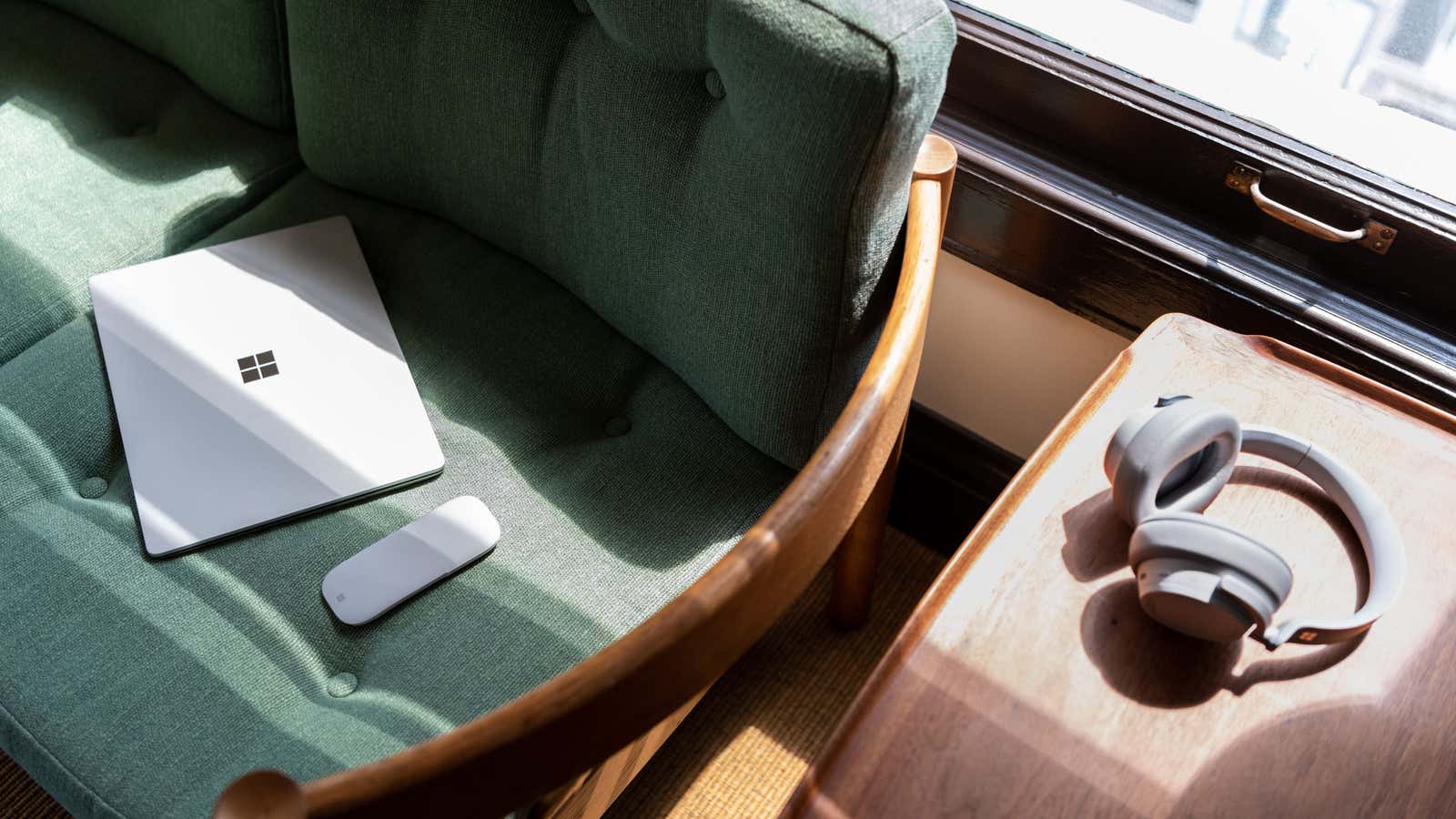At a small event in New York on Tuesday (Oct. 2), Microsoft unveiled a range of new devices that, at first blush, seem like solid refinements on critically acclaimed products. The company also showed off new Windows software, a new way of owning its products, and one more thing: A new pair of wireless noise-canceling headphones that come with Microsoft’s digital assistant, Cortana, built in. It was a tight, hourlong information-packed presentation that, for some reason, was attended by Bradley Cooper.
Last month, Apple spent about an hour and a half unveiling an updated iPhone X, a nice new watch, and a new budget phone. It was not exactly the most packed event, in terms of products, the company has ever held.
While Apple still has its strong pedigree in design and craftsmanship to rest upon (although some products are definitely lacking these days), there’s only so many times it can have a product launch event like September’s and expect new customers (and even some loyalists) to keep flocking to them. Microsoft, on the other hand, a company that made its name on software, seems to be getting better at hardware with each passing year.
Yesterday’s event felt very much like an intimate version of an Apple event—Apple’s new Steve Jobs theater can hold 1,000 people, whereas there were maybe 100 in attendance yesterday (though CEO Satya Nadella was noticeably absent). Top execs ran through the new hardware, what set it apart from the competition, and ceded the stage to underlings to run through software, interspersing speaker changes with slick marketing videos of the products. The company’s head of devices, Panos Panay, returned to the stage at the end to introduce the new headphones, the event’s “one more thing”—a presentation technique directly lifted from Apple cofounder Steve Jobs—before closing out the event.
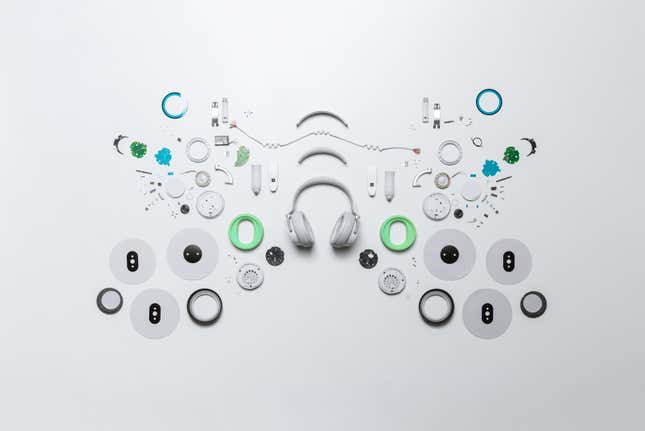
After Panay was done, journalists and analysts rushed over to check out the new devices. Microsoft has expanded its Surface line of products to include myriad laptops, tablets, desktops, and now, headphones—all of which were on display.
One of the highlights from the event was the Surface Studio 2, its new desktop computer, that arguably has taken the mantle from Apple’s iMac as the most gorgeous desktop around. The $3,499 machine has a 28-inch HD touchscreen display, and can be used like a traditional desktop or, with the push of a finger, slanted down into a drawing easel, or a flat, ahem, surface to write upon.
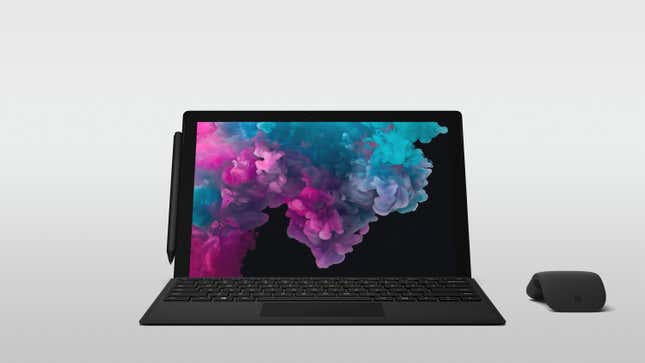
The Surface Laptop 2 and Pro 6 tablet were also unveiled. Both run full versions of Windows, and now come in a black shade that feels both modern and quite retro (remember when laptops only came in black?). The devices connect to one of the most well-designed portable mice I’ve used in years, the Surface Arc mouse. The novel $80 mouse seems to employ the same technology 1990s slap bracelets did: it lays flat, but push it up from the middle, and it pops into an arc that lets you hold, and also turns the mouse on. Being so flat, light, and thin, it’ll fit in even the narrowest of carrying cases. And it runs on AAA batteries—compare that to Apple’s rechargeable Magic Mouse 2, which has the slight design flaw of being completely unusable while it’s charging.
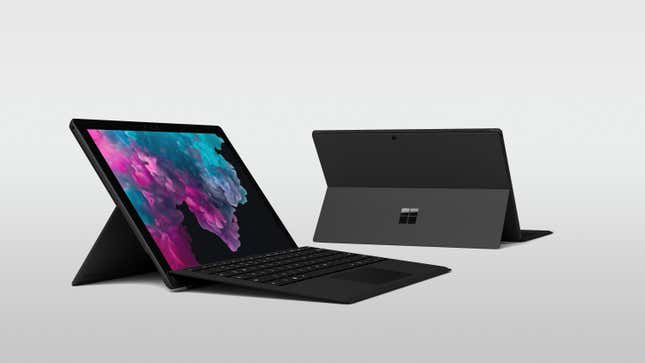
Microsoft also attempted to one-up Apple’s iPhone Upgrade Program, where customers can pay a monthly fee to get its latest smartphones (and customer support) each year. Microsoft introduced All Access, a monthly payment plan that includes a Surface device, accessories, and a subscription to Office 365 software. It starts at $25 per month for a Surface Go tablet with a keyboard cover and goes up from there. Although, unlike Apple’s phone plan, subscribers don’t get a new device in a year; they just pay off the price of a device in two years .
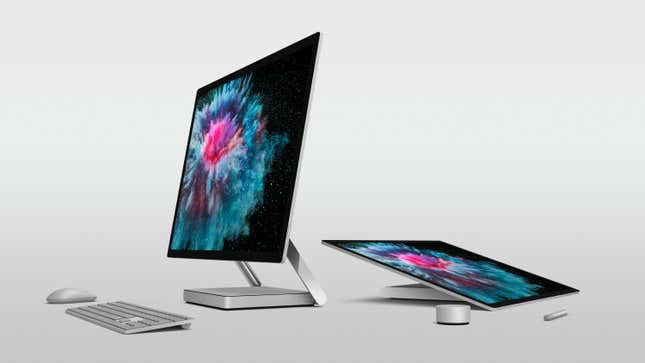
Microsoft was the dominant force in computer software in the 1990s and early 2000s, but missed the industry’s shift to mobile. After a few years in the wilderness, the company seems on far more solid footing, mainly as it’s embraced the cloud and distributed software services. During that time, it’s also managed to start building impressive hardware, too: It was once mocked for me-too products like the Zune (its answer to Apple’s iPod), and even its recent Surface hardware push has been criticized as trying to copy Apple’s design-forward products in order to capture high-end hardware revenue.
But the thing is, Microsoft’s current hardware is more interesting than what Apple is pushing. The Cupertino company has oscillated between marketing the iPad as a PC replacement for many, and seemingly realizing that few want to do that, as its computer sales remain relatively robust. It’s produced a few decent upgrades to its computers (as well as a few misfires), but nothing about them has felt particularly revolutionary for some time. Microsoft, on the other hand, is trying all sorts of new things. Many may not pan out, but the company at least seems to be interested in figuring out how customers may want to use its Windows software in the future.
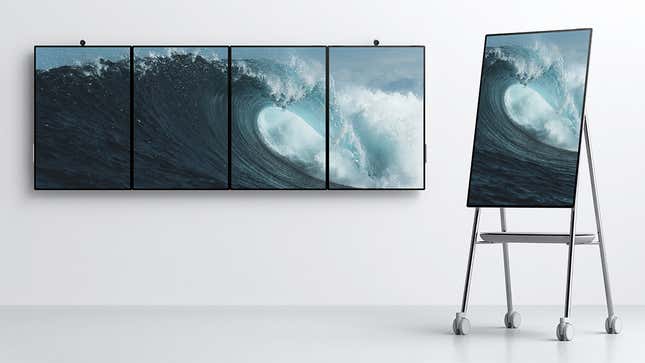
Microsoft has unveiled some zany (and pricey) ideas recently, like the Surface Hub 2, which is supposed to be the future of collaborative office working, and the Surface Studio, which feels like a cross between an age-old easel and a desktop computer. It came up with the new Surface headphones because it thinks that’s what modern office workers need (seeing as no one has cubicles anymore). It’s made tablets with halfway decent keyboards that run a full operating system and can connect to a mouse (so you can actually mess around with spreadsheets and presentations from your airplane seat). And it’s staying away from smartphones—beyond integrating mobile notifications into Windows—because it seems to recognize now that isn’t its wheelhouse.
With many of its devices, Microsoft is selling to business consumers, or people looking to do work and play on the same device. Much of Microsoft’s history has been wrapped up in selling services to large companies—something Apple has yet to crack at large scale—so perhaps it’s not as surprising that Microsoft would be willing to get a little more experimental in an area it generally feels comfortable in. The difference now, however, is that it’s selling physical products, instead of managed licenses to Microsoft Office or Windows XP.

Apple will invariably continue to sell many computers and tablets (partially because of how well it has mastered locking us into its ecosystem), and there doesn’t seem to be any guarantee that Microsoft’s hardware bet will pay off. Its “More Personal Computing” business, which includes Surface devices, along with Xbox console sales, and sales of Windows software, accounted for nearly $11 billion in revenue this past quarter. While the company noted that its Surface device revenue was up 25% over the same quarter a year earlier, that’s still a far cry from the roughly $40 billion Apple generated in hardware sales in the same period. But at least Microsoft is trying new things, exciting things, that have even forced Apple to adapt—the Surface tablet, with its connected keyboard case and stylus came out about three years before Apple’s iPad Pro.
When it comes to computer design, Microsoft seems to have taken Apple’s crown, at least for the time being.
